Many of us have fish poachers but when it comes to poaching a flatfish like a sole or flounder, we’re lost. The standard solution to this quandary is a special fish poacher called a turbotière, diamond-shaped, with handles on the ends and a rack for lifting up the fish. The only problem with said devices is their cost. They’re usually made of copper and can cost upwards of $1000. While I’d love to have one–they’re beautiful–even I have a hard time justifying this expense since poaching whole flatfish isn’t a daily procedure. To improvise a turbotière at home, you’ll need a roasting pan that’s deep enough to hold the fish covered with liquid and a cake rack, grill-like to help the cake dry slightly. Unfortunately, most cake racks don’t fit into most roasting pans so you’ll have to cut the cake rack down to size with wire cutters. Once you’ve got it so that it fits into the roasting pan, attach loops of strings to two ends so you can lift it out when the fish is ready.
Traditional recipes usually call for poaching in a court-bouillon, which is essentially a vegetable stock. The fact is that very little flavor from the poaching liquid makes it into the fish such that the expense and effort of a court-bouillon are hardly worth it. An easier solution is simply to salt the water liberally and infuse it with a bouquet garni (a bundle of parsley, thyme, and bay leaf). If you’re in a restaurant situation, re-use the poaching liquid so that you end up with a rich fish broth you can use for making sauces. You can even use it as the base for a beurre blanc or hollandaise.
Here we show preparing and poaching a turbot:
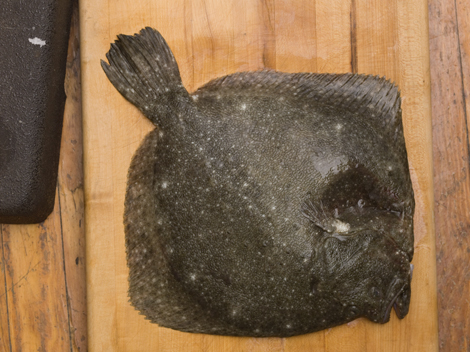
1 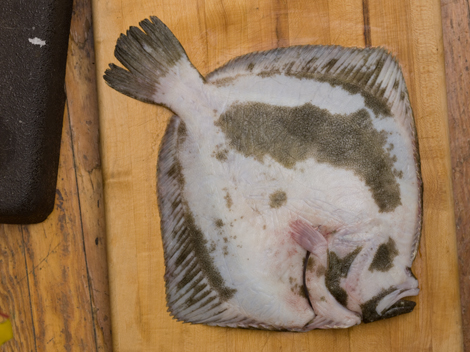
2 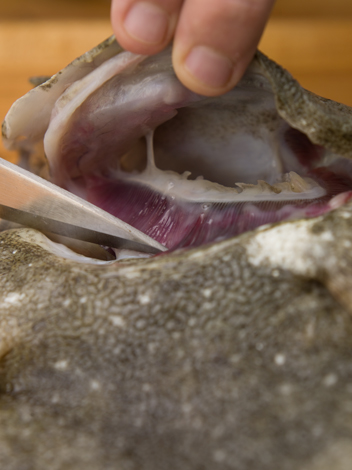
3 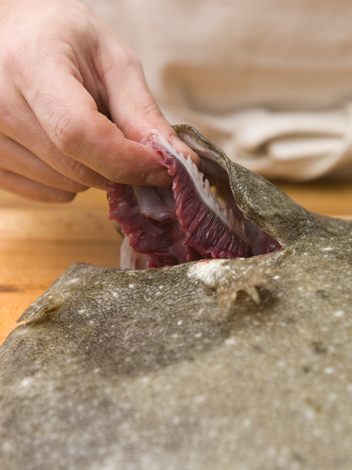
4 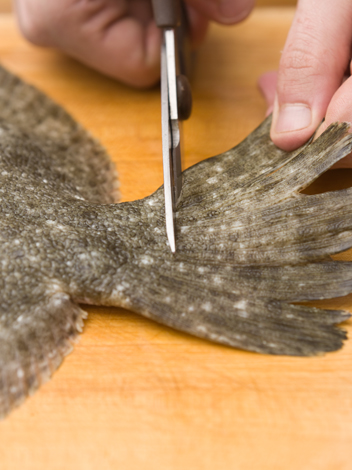
5 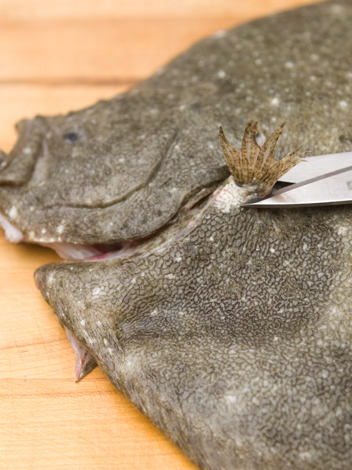
6 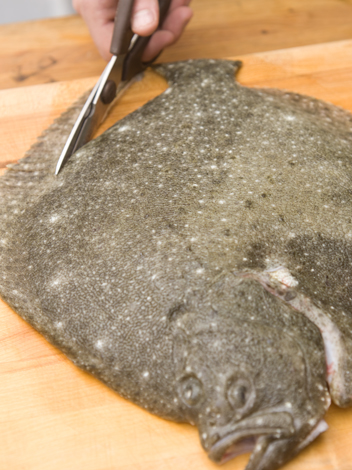
7 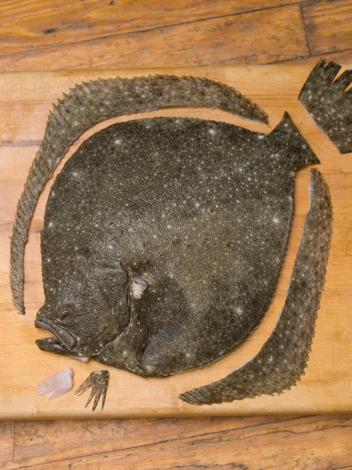
8 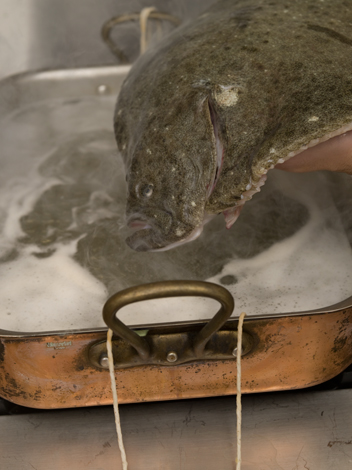
9 
10 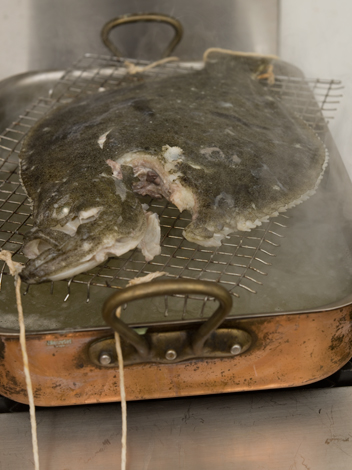
11 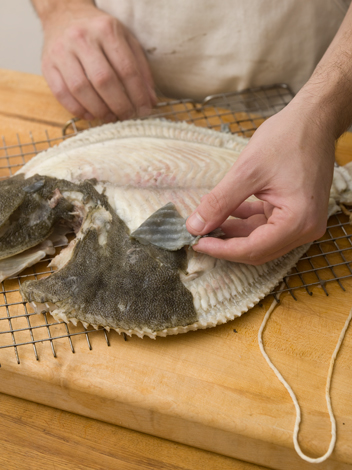
12 
13 
14 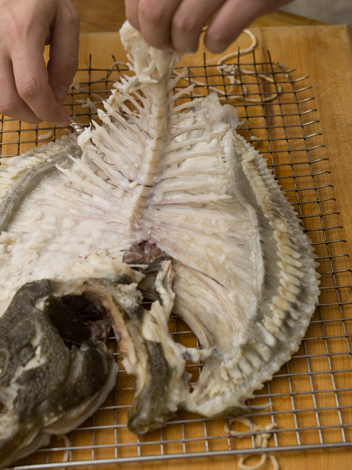
15 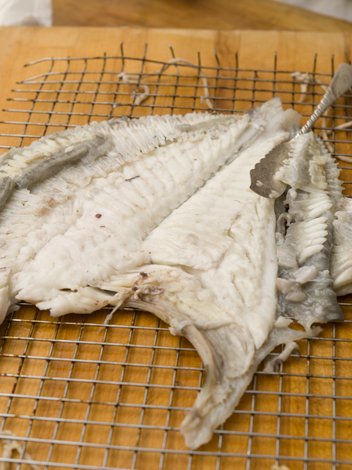
16 
17 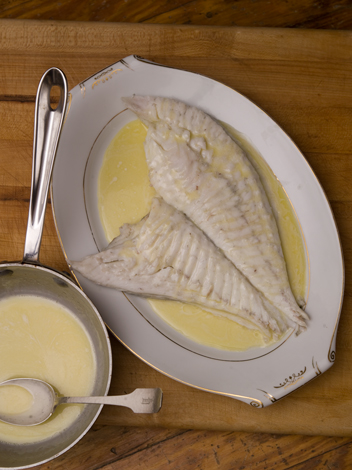
18


